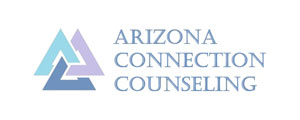Unmasking: How to Uncover the Truth Beneath Our Emotional Armor
The Masks We Wear Not Just on Halloween

We all wear masks sometimes — not just on Halloween.
The one that says, “I’m fine.”
The one that hides the exhaustion, the anxiety, the ache of feeling disconnected even when surrounded by people.
We learn early how to wear these emotional “costumes” to survive — to fit in, to avoid rejection, to protect our hearts when the world feels too heavy. But after a while, the masks start to stick. We forget what it feels like to show up without one.
Why We Wear Emotional Masks
At some point, the mask served a purpose. It helped us move through school, work, relationships, and even family dynamics that felt unsafe or overwhelming. Maybe you learned that being strong earned love. Or that staying quiet kept the peace. Or that smiling made everything seem okay. These coping strategies often work—for a time.
But when the world sees only the mask, not the person behind it, connection becomes harder to find.
And that kind of loneliness can feel even more painful than being alone.
The Cost of Emotional Armor

The problem isn’t that we wear masks—it’s that we forget to take them off. When you’ve spent years holding everything together, vulnerability can feel like danger. So you keep smiling. Keep performing. Keep carrying it all. But over time, that armor grows heavy. The very thing that once protected you becomes the thing that isolates you. It’s a strange kind of exhaustion. You’re doing everything “right,” yet you feel unseen, unknown, and somehow off.
What Halloween Reminds Us
Halloween gives us permission to play — to experiment with identities, to laugh, to reveal parts of ourselves we usually keep hidden. There’s something freeing about it. But what if we gave ourselves that same permission year-round — not to pretend, but to unmask?
To show up imperfectly.
To say, “Actually, I’m not okay right now.”
To trust that real connection begins not when we hide, but when we’re honest.
This Halloween, as you help your kids pick costumes or put one on yourself, take a quiet moment to ask:
What mask have I been wearing lately?
And what would it feel like to set it down?
Because the real you — the one behind the mask — deserves to breathe.
Therapy as a Safe Place to Take Off the Mask

In therapy, you don’t have to perform.
You don’t have to have it all figured out.
You can bring the parts of you that feel messy, uncertain, or tired — and they’re welcome.
Therapy is a space to practice taking off the mask in small, safe ways, until being yourself doesn’t feel so risky anymore.
It’s where you remember that you don’t have to protect yourself from being seen. If you’ve been feeling like you can’t drop the act or let anyone see what’s really going on, therapy can help.
At Arizona Connection Counseling, we offer a safe, supportive space to explore the parts of yourself that feel hidden, guarded, or misunderstood.
Because you don’t have to keep pretending everything’s fine.
You deserve connection that feels real.
